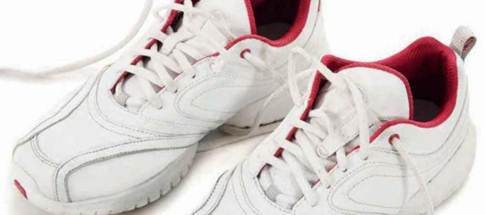Race day
Eat alight breakfast, like two pieces of
toast, three hours before the race, says Troop. Don’t load up on muesli as
you’ll want to go to the toilet 2km into the race. A big breakfast will make
you feel heavy and increase your chance of getting a stitch.
If it’s cold, take old clothes you can
chuck away or even a bin liner for standing on the start line.
Many races start in the dark but finish in
bright sunshine. Be prepared with sunglasses, sunscreen and a hat.

If you’ve entered a big race, know that it
might take a few minutes to even cross the start line but don’t waste energy
trying to zigzag round people to get there faster. Major races give runners
chips to tie on o their shoes so your time won’t start until you cross the line
anyway. Don’t panic when you see the crowds. Try to find some space and know
that by the 5km market, things will open up.
Psychological hurdles
Troop probably knows more about bouncing
back than most athletes – he has hard three disastrous incidents at the
Olympics mostly due to injuries, but he still loves running.
Here are his tips:
Remind yourself that when things go right
and you achieve your goal, you will bask in the euphoria for a long time
Beware of becoming compulsive and obsessive.
That can eradicate your enjoyment and make you frustrated if you miss goals.
Keep a check on your training-life balance
If you aren’t enjoying your running, do
something about it.
Find new people to run with, run new
routes, cut down on your running, change your goals, and remind yourself of the
reasons you run.

Running faster
A common mistake runners make is to do
their long training runs at the pace they want to run their race. Even elite
athletes don’t do that. To build up racing speed, you need to run two or three
shorter, harder sessions during the week. The accumulation of the training load
is what gets you across the line in a personal best.
Intervals
This is when you do bursts of speed
followed by recovery jogs. Start by running hard to a lamppost, then jogging to
the next lamppost. Once you’ve got the idea, get a training schedule which will
recommend interval sessions depending on your race length and experience. This
could include timed bursts or distances of 100m to 800m and you’ll be trying to
run at a speed faster than your race pace.
Tempo runs
For this you need to estimate the time you
want to run your race. Use an online race time calculator (go to
runningtimes.com, then Pace Tools, then Calculators) and then measure out a
course, usually at least 3km. warm up for 10 minutes then attempt to run the
entire course at your race pace. Cool down for 10 minutes.
Hill training
This is fantastic for building strong legs,
glutes, heart and willpower! Aim for a hard run-up time of at least 45 to 60
seconds, and then jog to recover.
Running better
Here are some tips from Radcliffe’s new
book How to Run (Simon & Schuster, $27.99) to get you started.
Optimize your strike pattern
Over striding will cause you to land
heavily on your heel, putting stress through the body and acting like a brake
on each stride.
You should aim to land lightly, midfoot,
under your centre of gravity, and take off from the propelling foot when it’s
directly under your hips. If you’re struggling, book a session with a biomechanist
who can analyze your stride and help correct it.
Improve leg turnover
The more steps you take per minute, the
faster you’ll go. Aim for 170 to 180 steps per minute. Counting strides is also
a useful mind-focusing mantra.
Women’s issues
Some women who train for long distances
find their periods stop or become erratic, says Radcliffe. If that happens to
you, reduce stress, increase your intake of nutritious foods and see a doctor
or dietitian. Scientists say that women need around 17 per cent body fat to menstruate
but Radcliffe thinks her periods continue when her body fat is far lower and
that lack of nutrition could be the key. If you’re only just eating enough to
meet your exercise requirements, it can affect your hormonal balance and switch
off your menstrual cycle.
Get a blood test to check iron levels if
you’re inexplicably tired. Not only can we lose iron in menstrual flow, runners
tend to absorb less iron from food as their bowels move faster.
Anti-inflammatories can also increase this loss.